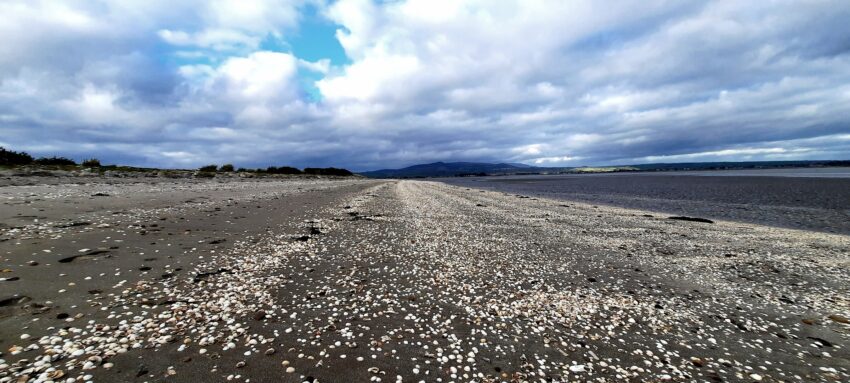The Cunnigar Spit is a looped walk that has been on my bucket list for some time, and it was only when I saw photos of it on Twitter recently that I was reminded of it. Always on the lookout for short, interesting loops that I can walk during the week, I seized the opportunity and drove the 40 minutes out to An Rinne to the start point.
How to get there: Coordinates 52.0585273,-7.6024221. Or key ‘Cunnigar Car Park’ into Google Maps.
Length: I tracked the Cunnigar loop at 6.6km. It took me just under an hour and a half to walk it at a leisurely pace and stopping to take photos and admire the scenery.
Sperm Whale lands on Cunnigar Spit
The last time I was out at the Cunnigar ‘Spit’, the tide was out, and I, along with hundreds of other people, had gone to stand on the beach in the lashing rain to view a large sperm whale that had washed up on the sand.
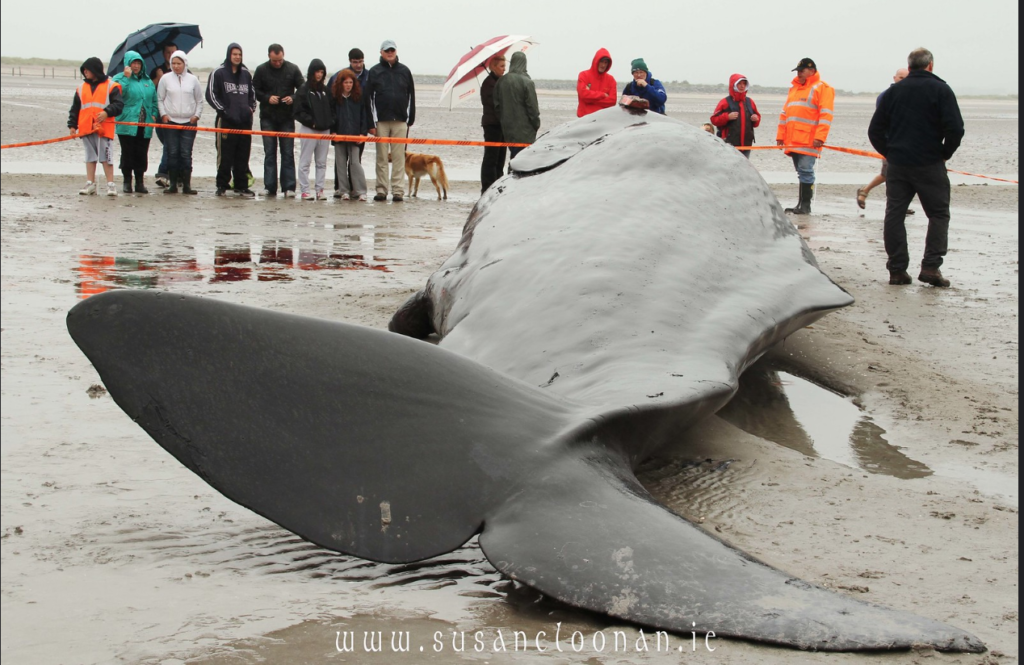

Nothing could be done for the poor whale. He beached on the 18th of August 2011 and died a couple of days afterwards. His carcass was (as far as I’m aware) removed by the local Council for incineration, although many thought that his remains could have served both as an educational resource and as a tourist attraction, as had been the case with a fin whale that beached in Kilbrittain in Cork in 2009.
Parking at the Cunnigar
There’s a car park at the entrance to the Cunnigar beach that accomodates about 20 cars. The road down to it is narrow and there’s every chance you’ll meet a tractor and trailer, or several, as they make their way to and from the oyster beds. I met two of them in the space of ten minutes, and there were two more pulled off the beach while I was parking the car.
The tide was out and, as I began to walk out the length of the beach, I could make out a horse and rider making their way in from the sea edge.
Weather
As the Cunnigar is quite exposed, I’d advise against walking it on a blustery day.
Setting out on my walk, the sky was dull and grey, but as I neared the end of the spit nearest to Dungarvan, the clouds rolled back exposing a beautiful blue sky trying to push through. The walking was easy with the option to walk over damp sand leaving inch deep footsteps behind or on the solid, shell surface of the beach, or follow the trail that meandered through the grass dunes.
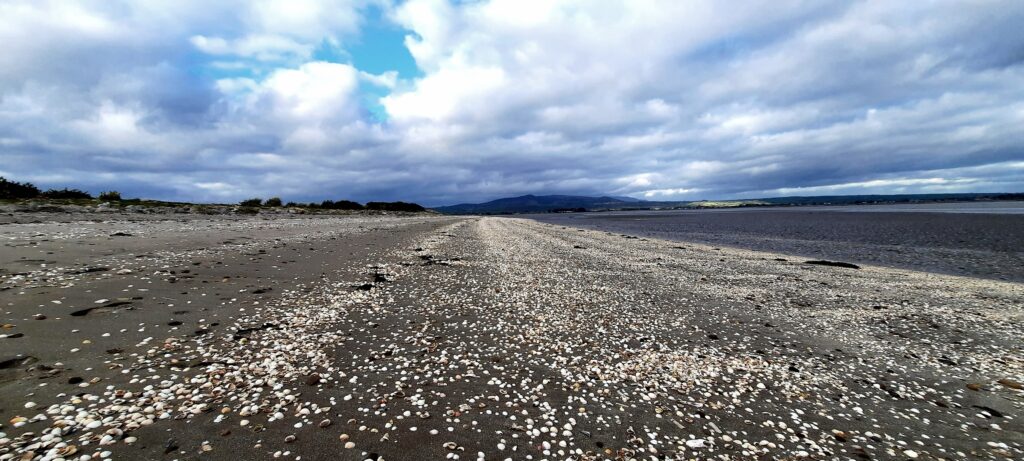
Looking towards Dungarvan, there was a fine view of the Comeragh mountains. I could hear sea birds calling to each other and the sound of the tractors moving across the sand. Reading up on the various wild birds that inhabit the Spit, I regret that I didn’t bring my good camera with me. On the far side of the loop, I’m sure I saw a heron standing still in the grass.

Coming back, I walked on the far side of the spit and took the track through the grassy dunes.
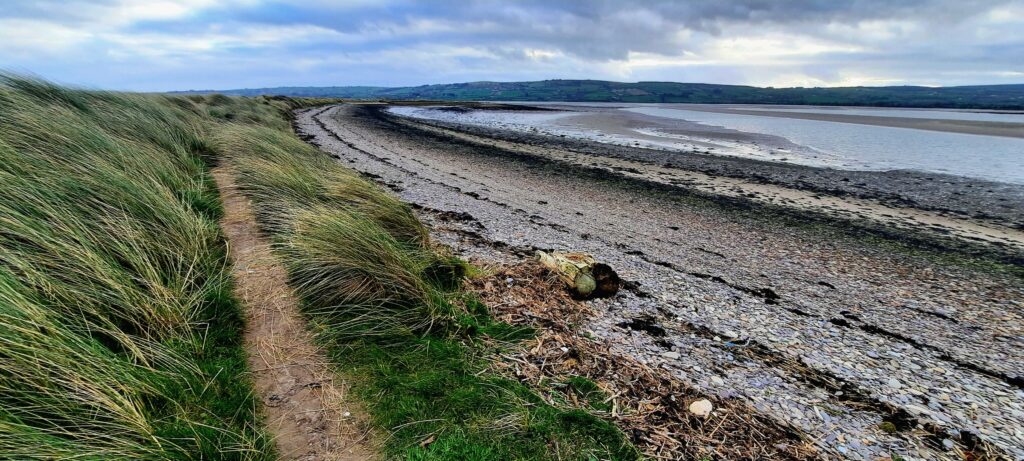
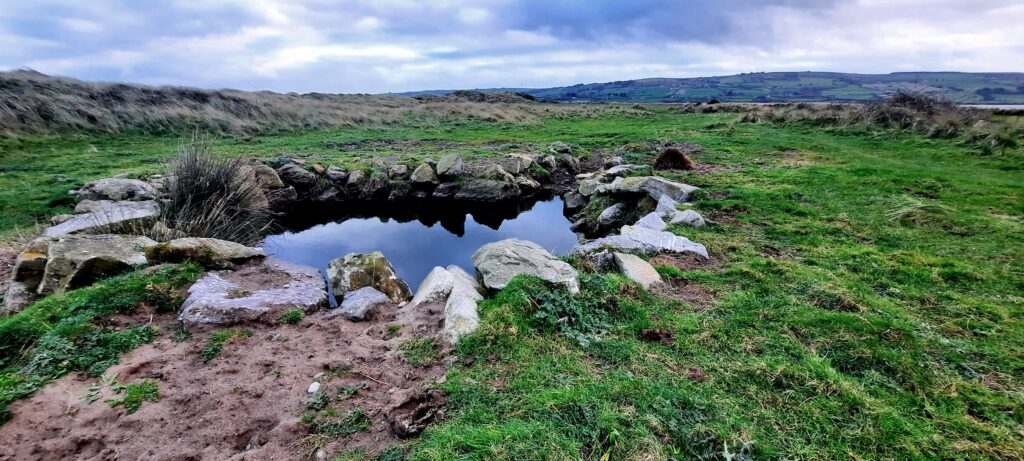
There’s a lot to watch out for on the way back. This rocky pool was one such thing. I’d love to know what it is. Is it a cow bath? A water source for them? There are cows roaming freely on the Cunnigar and I got a bit of a start when I realised that there was no fence separating them from me as I walked alongside them. But they had no interest in me, which was good, because I’ve been followed by inquisitive cattle in the past. Which reminds me, don’t forget to watch out for the cow pats!
Stone Walls!
I found a stone wall so, of course, that made me happy. I wondered how this stretch of land had changed over the years. Who built the wall? Why? All the usual things I think of when I see old stone walls. At least I didn’t have to go ducking and diving under trees to follow this one.
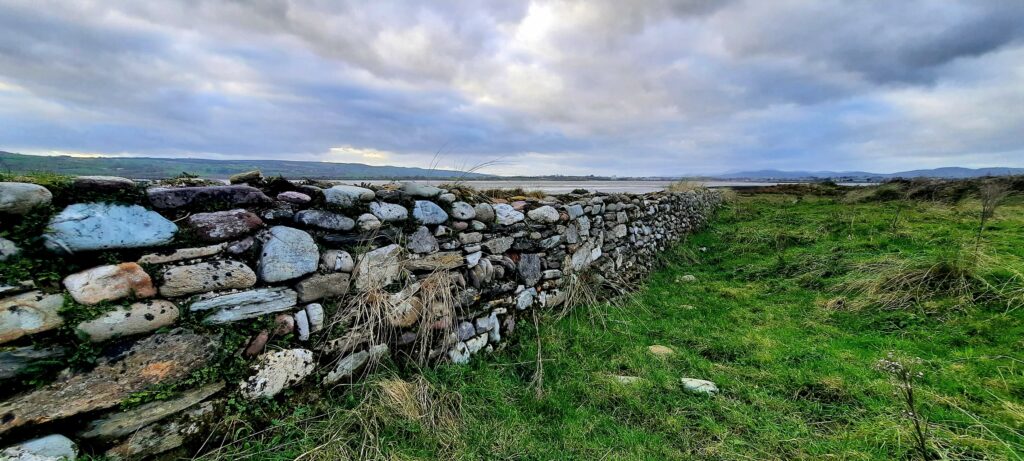
The view of Dungarvan bay from the Spit was so beautiful, even though it was a dull day.
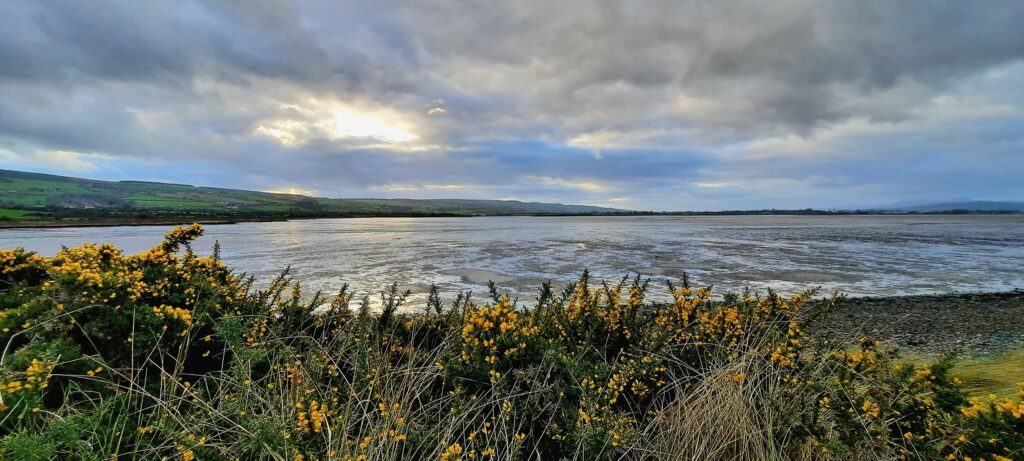
This is definitely an exceptional place to visit and a location I’d return to. It’s peaceful and unspoilt (although the traffic from Dungarvan is audible at the end of the spit closest to the town). Someone works hard at keeping the beach rubbish free. There are a couple of bins marked ‘Clean Coasts’ on the beach, and these had been emptied and the rubbish awaiting collection.
As far as I’m aware, Dungarvan Hillwalking Club run a Cunnigar Crossing event which takes place annually in July or August. A walk that’s definitely worth watching out for.
